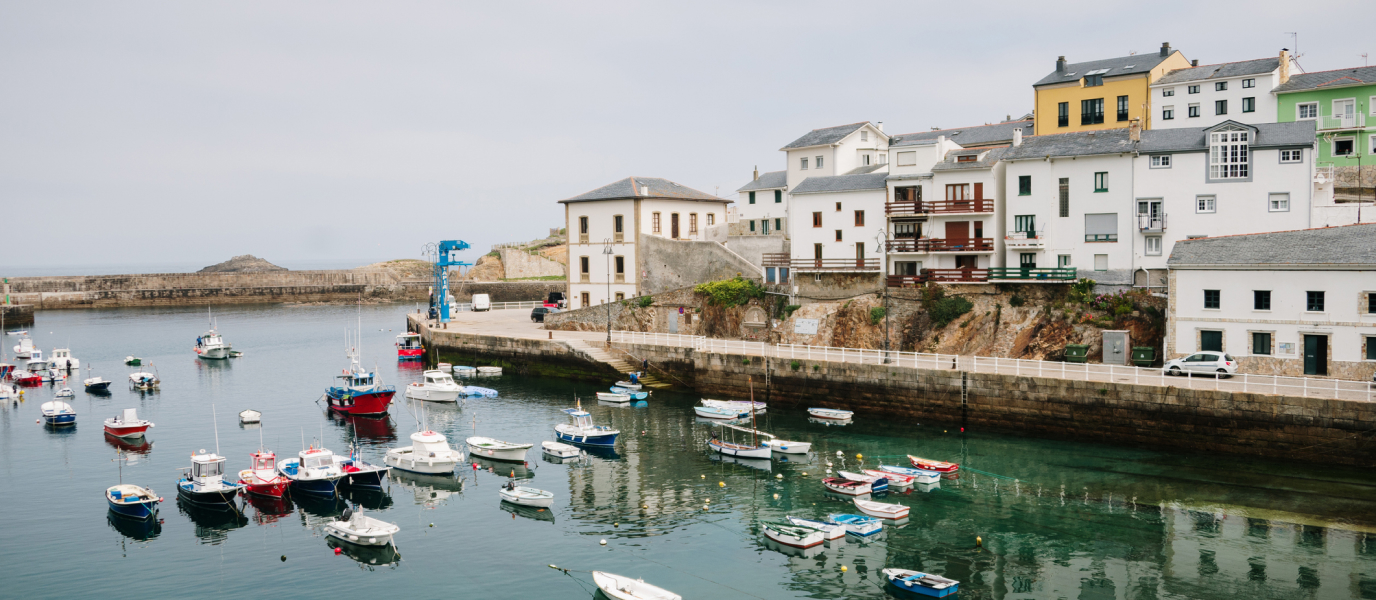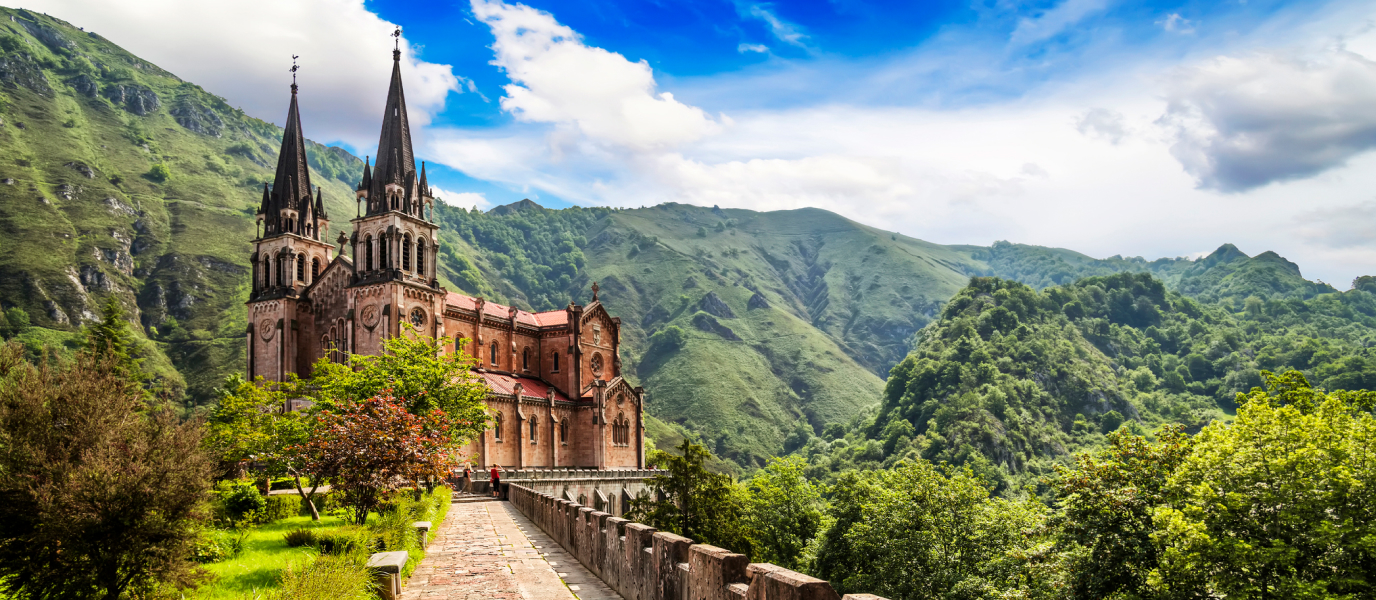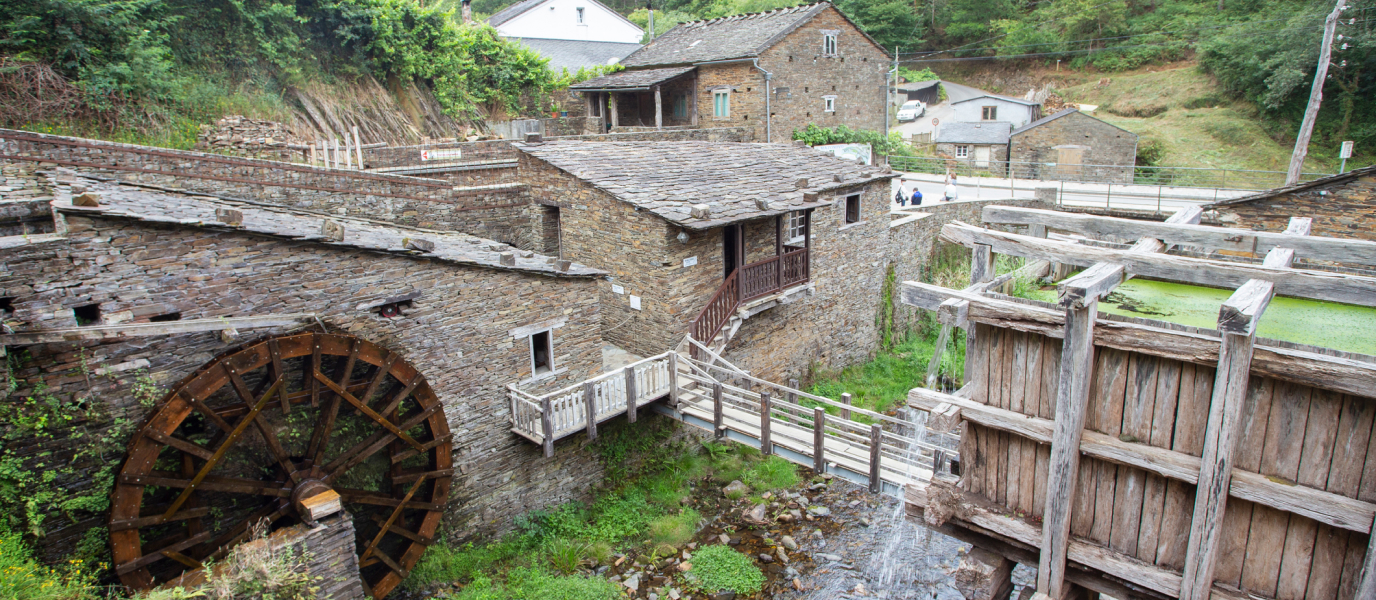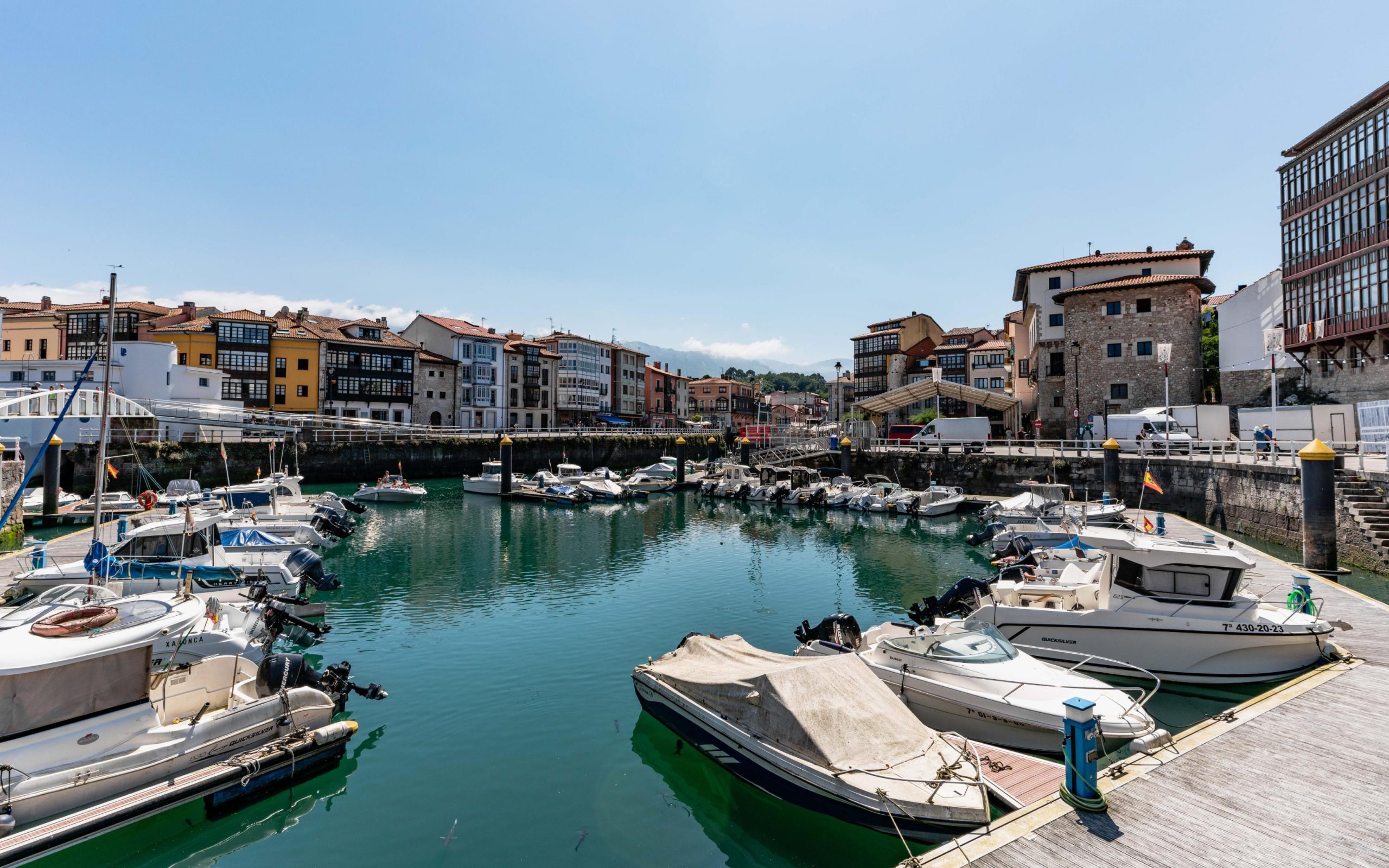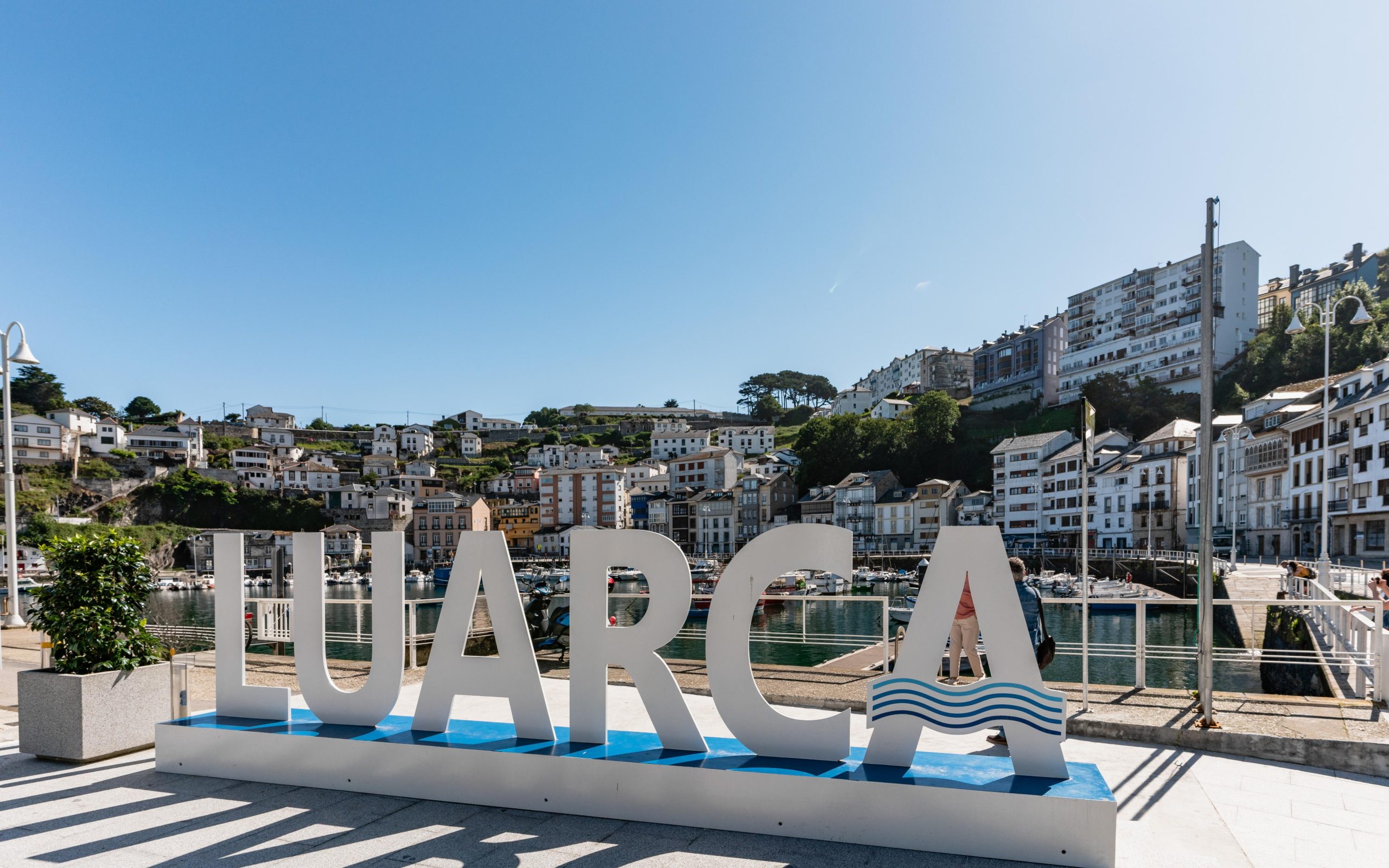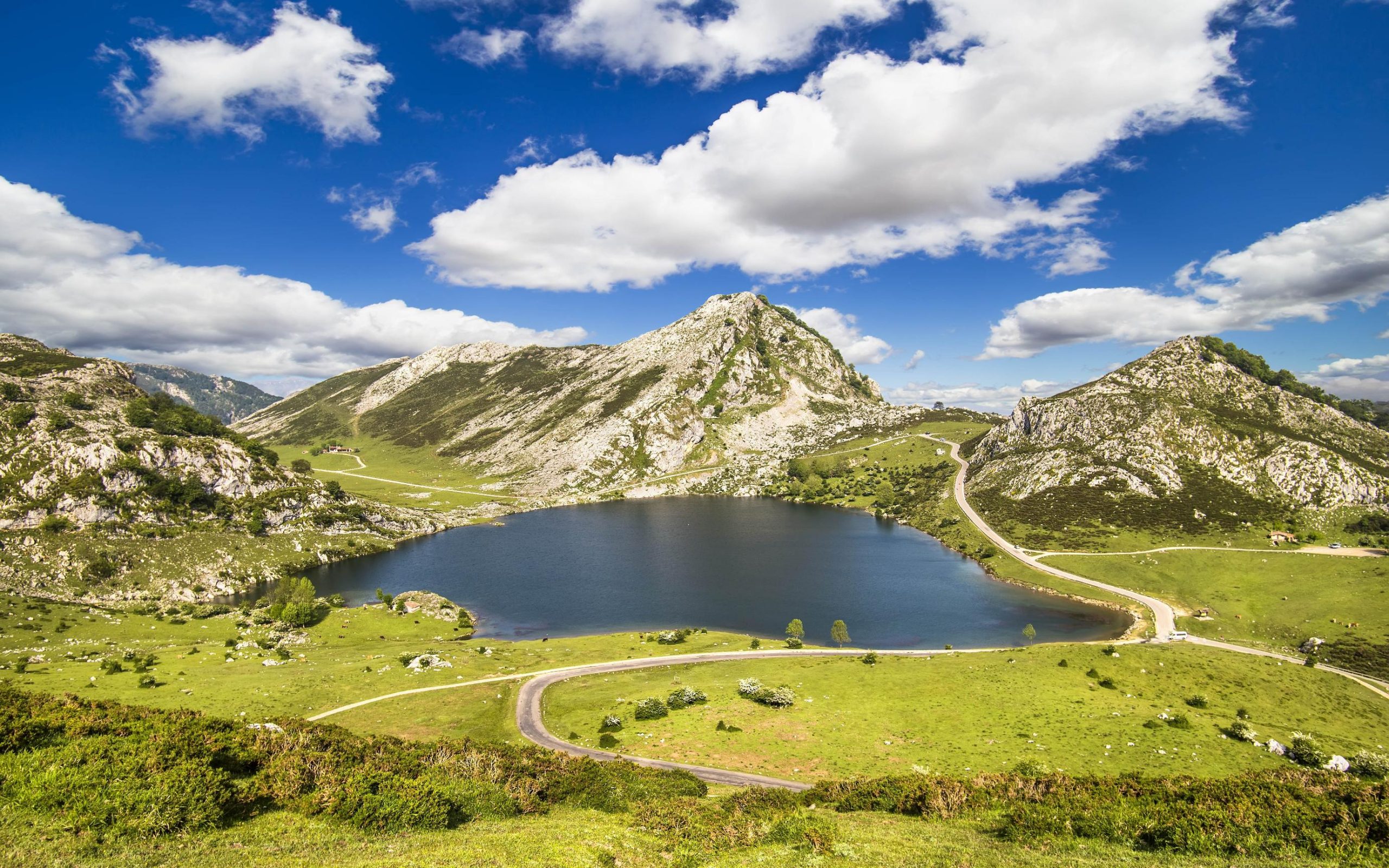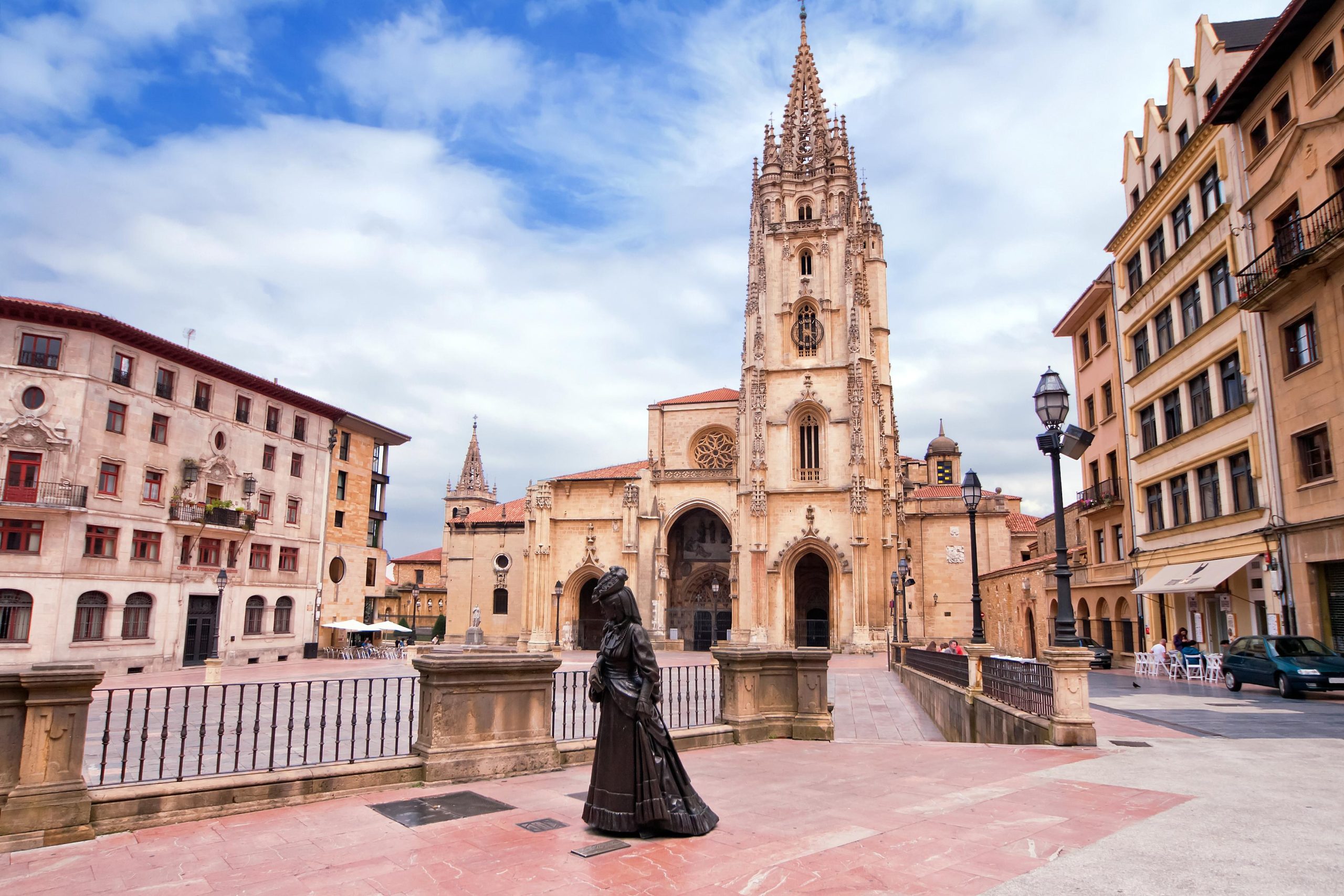Villaviciosa, the epicentre of the region’s cider production, means ‘fertile town’ in Asturian and it owes its name to the lush estuary, flanked by apple orchards, cider-press houses and renowned cideries. Venture into the town centre to enjoy the local drink and Asturian cuisine at any of the eateries, cider bars and restaurants.
The most spectacular building in Villaviciosa is the 13th-century Church of Santa María de la Oliva, but it isn’t the only Romanic place of worship. The parish boasts no less than 27 temples, dating from the 11th to the 13th century, most of which have been restored. Come discover the largest concentration of Romanesque art in Asturias.
Villaviciosa and its 27 Romanesque temples
Begin your tour of the Romanesque temples with the church of Santa María de la Oliva. The year 1213 appears etched into the stone, indicating when it was founded. Once inside, you’ll see how the nave houses a Romanesque apse, even if the façade presents Gothic elements such as pointed arches and rosettes. There is also 15th-century image of the Virgen in the tympanum.
Located outside the town of Villaviciosa, the 9th-century church of the Holy Saviour of Valdediós was commissioned by King Alfonso III of Asturias (‘the Great’). It is a UNESCO World Heritage Site.
Villaviciosa manor houses
17th– and 18th-century manor houses line the two main streets (Agua and Sol) exiting the town’s old quarters from the Plaza de Obdulio Fernández Pando, in front of the Riera Theatre. The plaza houses the statue La Manzanera, created by the Spanish sculptor Mariano Benlliure.
The House of Hevia and King Charles V, Holy Roman Emperor
One of the most important historical landmarks on the street Agua is the 15th-century House of Hevia, in which King Charles V once sought refuge. The story goes that the King was on his way to Santander when he was forced to stop in Tazones because of a storm. The King and his sister stayed at Rodrigo de Hevia’s three-story house for three days and four nights, before departing for Colunga. Two coats of arms bearing an imperial eagle hang in the middle of the house. Want to know what the Holy Roman Emperor looked like? Head to Plaza Rey Carlos I to see the bust that was commissioned to pay tribute to the Monarch.
What to do in Villaviciosa: a brief overview
The town has such an abundance of outstanding civil architecture and manor houses that it was declared an Artistic Historical Site. Other important buildings include the casona de Valdés, grade schools, the cottage of Les Baragañes, and the Ateneo Obrero (a cultural and educational centre).
On the outskirts of the old town of Villaviciosa, you’ll discover the splendid chapel of the Immaculate Concepción, the 17th-century palacio de la Torre and the 18th-century Convent of Santa Clara. There is also the parish church of Santa María de Villaviciosa, located on a hill. It was built integrating the 18th-century Franciscan convent that used to occupy the premises. Another worthy point of interest is the colossal 20th-century supplies market.
Exaltation of the apple
Take a walk around the square housing the 1906 town hall and then head to the 1928, palm-tree-filled Ballina Park. You’ll also see a monument designed by the Spanish sculptor Eduardo Úrculo, named ‘Exaltation of the Apple’ (1996) – an obvious tribute to cider.
The renowned El Gaitero Cidery is located just 1 km from Villaviciosa, when heading towards Santander. Open to the public, visitors can tour the site and learn about the history behind the century-old cidery. Guided tours are organised by the José Cardín Foundation. The exhibit includes manuscripts, leaflets, machinery, photos, advertisements and many more items the company has kept safe over the years.
Beauties from Asturias
The cidery warrants a visit, even if it’s just to watch the 1920 film Beauties from Asturias. The documentary combines shots of Asturian cities and towns, while it tells the story of the La Espuncia cider mill and explains how cider is produced. Admission is free but we do recommend you book in advance.
Every summer, Villaviciosa organises Festival de la Ría, a series of concerts that take place at the church of Santa María de la Oliva. Featuring national artists, more than 2,000 people attend each year. Another not-to-be-missed musical event is the organ concert at the church of Santa María de Valdediós. The church is equipped with an organ that has been declared an Asset of Cultural Interest that promises a unique musical experience. Admission is free and seating is allocated on a first come, first served basis.
Restaurants in Villaviciosa
Don’t forget to enjoy the delicious Asturian cuisine while discovering the area. Eating in Villaviciosa is an unforgettable experience. Choose from a wide selection of dishes that goes beyond the typical dishes of capacho and fabada. Read the article Where to eat in Asturias to find out more.
Looking to enjoy a bit of sun and fun? The beaches of the Villaviciosa Estuary are not the only places offering sandy shorelines. There is the beach in Rodiles; the beach and harbour of Puntal; the beach of the Ñora; the beach and harbour of Tazones; the beach of Merón; the beach of Spain; the beach of Misiegu; and the beach of Bonhome.

























































